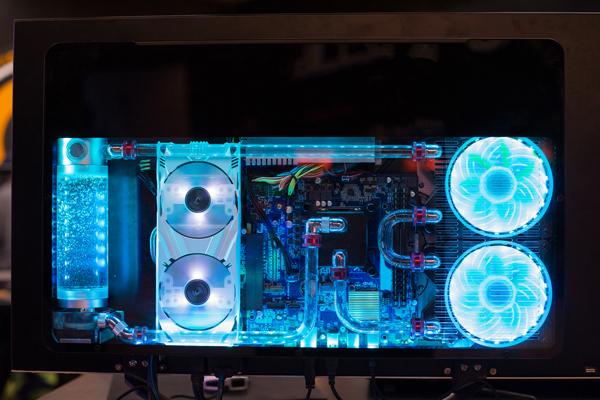Introduction
There are many industries which require heat exchange between gas and gas or liquid and gas, where both gases and liquids are corrosive and in some instances in high temperatures. For example, you can find those in fuel cells, gas heating, waste energy recovery, and others.
In most of those applications, the temperature, on the hot side, is within the 600° to 900° C range, vs. the gas or liquid on the cold side. At those high temperatures, the gases turn highly corrosive and we may end up with a major corrosion problem in our process. In addition, some of the applications use a corrosive liquid to begin with, such as deionized water, distilled water, KOH, and others.
Due to the issues mentioned above, the thermal and mechanical design of a resilient and effective heat exchanger for gas to liquid, is a major challenge.
Currently Available Solutions
There are several types of heat exchangers which can address the high temperature, corrosiveness, and different work pressure.
BPHE – Brazed Plate Heat Exchanger
This type of heat exchanger can address the issue of high temperature and corrosiveness. Still, there are several disadvantages when using BPHE:
- There is a requirement for special materials for the plates as well as the brazing materials.
- There is an issue with the pressure drop when using the BPHE. In order to achieve the desired small pressure drop we must plan to use several of the BPHEs, in parallel, which increases the volume and thus the price of the BPHE.
- As the temperature rises, the allowable working pressure that BPHE can work in, is decreasing. At 750° C, you cannot work with a pressure higher than 2 Bars.
Shell & Tube Heat Exchangers
There are 2 options for the shell & tube heat exchangers – straight tubes or U shaped tubes. When using the shell & tube heat exchanger you can achieve the desired results as far as working with high temperatures and corrosive materials. They have an advantage vs. the BPHE as far as working with high working pressure but they still have several disadvantages:
- The thermal effectiveness is lower and therefor it requires a larger heat transfer area which increases the volume of the heat exchanger and therefor the cost of one.
- The manufacturing process involves many welds which, over time, may present a reliability issue.
Fin & Tube Heat Exchangers
Today we can design and manufacture fin and tube heat exchangers for high temperature and corrosive liquids and gases. In addition, we can use them for high working pressure applications, for both gas and liquid (up to 550 Bars).
Fin and tube heat exchangers have many advantages when compared to both BPHE and shell and tube heat exchangers:
- The fin and tube heat exchanger can support very high working pressure – up to 550 Bars.
- The fin and tube heat exchanger can achieve very low pressure drop – 0.1 Pascal.
- The fin and tube heat exchanger can be manufactured (both fin and tubes) using several different types of stainless steel. For example – 316, 310, Inconel, SMO, Duplex, and others. Therefore, we can match the material to the desired temperature and corrosiveness of the gas and/or liquid we are using.
- When using fin and tube heat exchangers, the heat exchange surface area is larger and therefor provides a very good thermal solution.
- The fin and tube heat exchanger provides heat transfer under corrosive conditions and temperature up to 1250° C.
- The process of attaching the fin to the tube is a mechanical one which provides for better longevity and reliability.
- The manufacturing method for the fin and tube heat exchanger has a lower cost than for the other heat exchangers mentioned and therefore can provide a very competitive price.
- Designing the heat exchanger based on customer size requirements can be done relatively easy and with a lower cost.
- In the past, one of the barriers for using the fin and tube heat exchanger for these types of industrial applications was the lack of ability to provide a thermal design. Due to recent advancements, this barrier has been lifted and we are now able to provide thermal and mechanical design for most working condition (corrosiveness, high temperature, and pressure).
Summary
The challenge to design and manufacture heat exchangers for applications using corrosive gases or corrosive liquids, in high temperatures, is becoming a major one due to the increase in energy prices and the increasing demand for green energy such as fuel cells, natural gas usage, waste energy recovery and others.
Using the fin and tube technology together with different types of stainless steel allows us to provide heat exchange in almost any temperature and for most types of corrosive liquids and gases, while doing so effectively and reliably.
At Thermogym we specialize in the design and manufacturing of custom made heat exchangers for the following industries: Fuel cells, gas applications, waste energy recovery, for high temperatures and corrosive gases and liquids.
Please do not hesitate to contact us with any questions or issue.
Yariv R.



